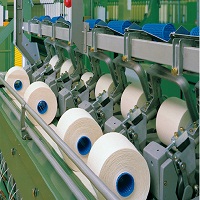 In its 45th meeting held on September 17, 2021, the GST announced certain changes in the GST rates for footwear and textiles in order to correct the existing inverted duty structure. The Inverted Duty Structure scheme entitles a supplier to get a refund of the accumulated Input Tax Credit (ITC) under the provisions of section 54 of the Central Goods and Service Tax (CGST) Act, 2017. However, certain goods in the footwear and textile industry are not considered eligible for this refund. And, to correct this anomaly, the GST council recommended an increase in the rates on goods manufactured by the footwear and textile industry from 5 per cent to 12 per cent applicable with effect from January 1, 2022.
In its 45th meeting held on September 17, 2021, the GST announced certain changes in the GST rates for footwear and textiles in order to correct the existing inverted duty structure. The Inverted Duty Structure scheme entitles a supplier to get a refund of the accumulated Input Tax Credit (ITC) under the provisions of section 54 of the Central Goods and Service Tax (CGST) Act, 2017. However, certain goods in the footwear and textile industry are not considered eligible for this refund. And, to correct this anomaly, the GST council recommended an increase in the rates on goods manufactured by the footwear and textile industry from 5 per cent to 12 per cent applicable with effect from January 1, 2022.
Profiteering by dealers may rise
As per a Business Today write up by authors Sandeep Sachdeva and Vishesh Mehrotra, even though the move aims to reduce the concentration of ITC in the hand of the industry players by increasing the rate of output GST, it would lead to profiteering by dealers by not passing of the benefits of tax reduction to consumers. As per a report tilted ‘Implementation of Value Added Tax (VAT) in India - Lessons for Transition to GST' by the Comptroller & Auditor General (C&AG) of India, released in June 2010, India has incorporated several laws under Section 171 of the CGST Act, 2017 check profiteering by businesses. These laws state, any tax reduction in the supply of goods and services need to be passed on to consumers by reducing the product prices. As per these laws, ITC also needs to pass on the benefits it gets on reduction in taxes on goods and services.
concentration of ITC in the hand of the industry players by increasing the rate of output GST, it would lead to profiteering by dealers by not passing of the benefits of tax reduction to consumers. As per a report tilted ‘Implementation of Value Added Tax (VAT) in India - Lessons for Transition to GST' by the Comptroller & Auditor General (C&AG) of India, released in June 2010, India has incorporated several laws under Section 171 of the CGST Act, 2017 check profiteering by businesses. These laws state, any tax reduction in the supply of goods and services need to be passed on to consumers by reducing the product prices. As per these laws, ITC also needs to pass on the benefits it gets on reduction in taxes on goods and services.
A long-term solution needed
Hence, to reduce ITC accumulation, the GST council has proposed to increase the output rates of taxes, with effect from January 1, 2022, for products manufactured by the footwear and textile industry. This would lead to a huge amount of tax rate rationalization across the industry, says the report
However, even though by increasing the rate of GST on footwear and textiles, the rate of accumulation of ITC would slowdown, it would still persist, albeit at a slower pace. Hence, stakeholders feel suppliers should either pass on the additional benefit by way of reducing the price of the goods or face the consequences under the anti-profiteering provisions.
According to the report, the new rule may lead to commercial disputes between the parties for renegotiation of price and concerning the application of anti-profiteering measures against an assessee. To avoid this, the footwear and textile industries need to analyze their existing contracts and pricing structure.












